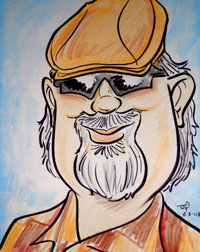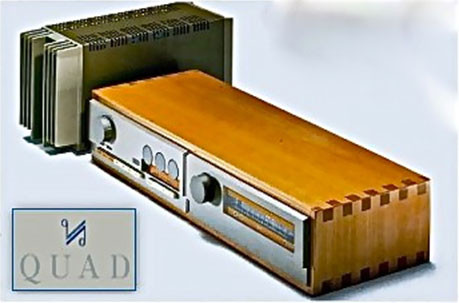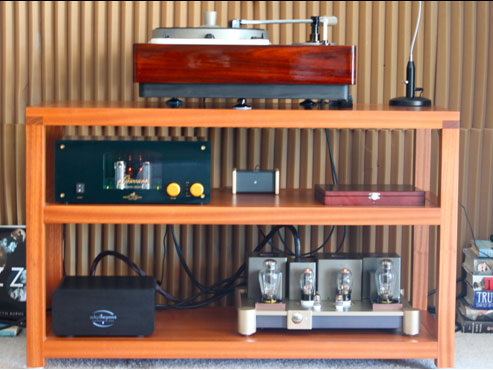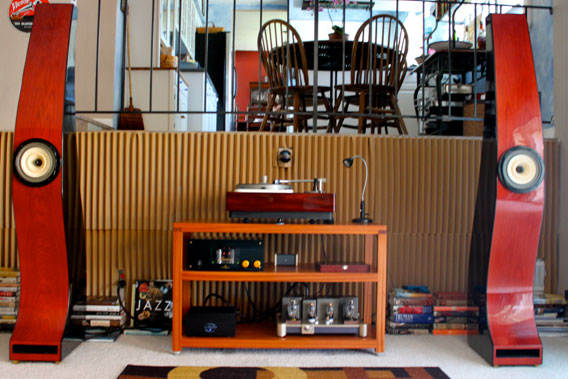At seventeen I was a Baylor student and was in the process of learning about high-end audio. By the time I was eighteen I had been diagnosed as an audiophile, a term I didn’t even know the meaning of when I was first told I was one. In this process I made some good friends. One was Paul, he was about ten years older than me and was an old school DIY audiophile. Paul also did most of the recordings of concerts at Baylor.
In 1973, I was nineteen and had put together a pretty nice stereo, as we called audio systems then. At that time it consisted of a Philips turntable, a single pair of Quad ESLs what we now call Quad 57s, and the little trio of Quad electronics, the 33 preamp, FM3 tuner, and the 303 power amp. I would pretty quickly upgrade to an Audio Research SP-3A and two pairs of Quads ESLs, but this article is about that original Quad system and my current reference system.
This afternoon as I put my new Shindo Giscours preamp into my system and stopped to take a picture of the near completion of my dream system.
It was at that moment that a conversation that took place 36 years ago with Paul jumped into my mind. Paul had come out to my place to listen to my system. If I remember right he had brought out a transistor McIntosh amp and preamp to compare to the Quad electronics on the Quad ESLs. What I remember most was his comment that he wished his granddad could hear this system. I asked him why and he said, “he’d never believe this kind of sound from such little-bitty equipment.” This could have especially been true in the eighties when I lived in a very small place and owned a Linn/Naim setup with Linn Kans.
As I sat and listened and looked at my new reference system I thought, “well, Paul’s granddad would really be shocked about this system.” He would be shocked that people were still using equipment so much like what he used. He would have been very familiar with large cabinet single-driver speakers, maybe even Lowthers. He probably would have owned a Garrard turntable and maybe even an Ortofon arm and SPU cartridge. Single-ended amps may have seemed a little retro to him, but a big tube preamp in Altec green would have been something he would be very familiar with.
I guess I’m saying that my dream system didn’t turn out to be all that modern, but instead a beautiful blend of retro and modern design. Every piece, starting with the Shindo Vinyl Playback System, is exactly that. When you look at the turntable you might think it’s just a Garrard 301 with an Ortofon tonearm and SPU cartridge. You would be mistaken though; the table has a brand new Shindo designed bearing, platter, and clamp. The plinth is tuned to get a very lifelike and alive sound. The tonearm is inspired by Ortofon, but built from scratch by Shindo, and the SPU A phono cartridge is reengineered and rebuilt by Shindo.
The same combination of old designs with new technology, and the highest quality parts is true of my new Shindo Giscours preamp, and my Wavac EC300B amp, and my Teresonic Ingenium Silvers with Lowther DX4 silver drivers.
What Paul’s granddad would have never imagined are the Wavac’s tube sockets milled from solid blocks of Teflon with gold-plated bronze phosphor contacts; or tube socket isolated from the chassis by its own suspension; or a chassis that’s milled out of a solid block of aluminum alloy; or speaker cabinets hand-built by “old world instrument builder.” He would have never dreamed of 24-karat gold interconnects, or anything like the Audience teflon power conditioner and their power cords.
This new reference system is really a beautiful combination of old and new; not only in design but also in sound. When I was a teenager there were three different sounds in high-fidelity audio systems, whether stereo or mono. The first two sounds could be found in lots of places. First was the sound that came from systems like Bozak Concert Grands with McIntosh big tube amps. This sound was big, warm, bold, and beautiful sounding.
The second really popular sound was probably best exemplified by Altec’s Voice of the Theater speakers or Paul Klipsch’s Klipschorns combined with Marantz or Scott electronics. This sound was more dynamic, with more presence, and speed. Those who liked the Bozak/McIntosh sound thought it was bright and harsh. On the other hand, those who loved the second sound thought the first was too polite and restricted in dynamics.
The third and much less often heard sound was that of the KHL Nines or Quad ESLs with Marantz or Quad tube electronics. The first time I heard this sound I was shocked. It was the first time I had heard speakers with so little color of their own. They had air, and clarity that I had never heard. I saved up and purchased a pair of Quad ESL (57s) when I was 19 and spent years trying to get the sound of the Quads with the dynamics of the Khorns. These speakers, of course, lacked in dynamics, though they excelled in micro-dynamics. They also had restricted bass and highs, and couldn’t play all that loud. Of course, all of these sounds started with good vinyl or reel-to-reel tape.
Then in the early seventies William Johnson started Audio Research, Jim Winey started Magnepan, and Harry Pearson started The Absolute Sound. The result was that before we knew it, everyone was looking for “High Definition” sound, and then a system that would produce a soundstage. Like most things in life, the pendulum swung too far and eventually we had audio systems that had pinpoint imaging, huge soundstages, great bass slam, incredibly fast transients, but had lost their soul.
I went down this road as well. The pinnacle of this type of system that I owned consisted of a pair of Celestion SL 700 speakers bi-amped by a pair of Beard P35 class A tube stereo amps. An Audio Research SP 8 preamp, and a Linn turntable. A very fine audiophile system, but lacking most of what makes music come alive in your listening room.
If you’ve endured all this rambling, I thank you. The reason for it is that my current stereo (it’s two-channel so why can’t we still call it a stereo?) comes the closest to getting the best out of all the above systems I have heard to date. It has all the life and dynamics of those early horn systems, it’s more open and out-of-the-box sounding than the Quads, it produces a more realistic and coherent soundstage than the Celestions, it’s considerably more organic than any of the above systems, and best of all it is so emotionally involving.
Is it perfect? Who the heck knows. It has the best bass I have ever heard, but I don’t think it goes much below 35 Hz. I can get a deeper and wider soundstage by making some changes to the system that makes it sound less like real music. Last but not least, it won’t play some music I like, because it’s a vinyl-only system. So, no, it’s not perfect, but it is quite fine.
Hoping you enjoy the journey as much as I do,
Your Beatnik
- (Page 1 of 1)




